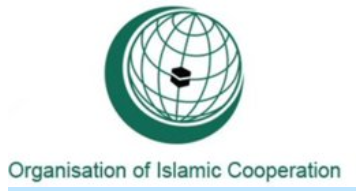▶Anonymous 06/01/19 (Sat) 01:42:048ec360 (7) No.6643276>>6643479 >>6643583 >>6643662 >>6643766 >>6643876 >>6643884 >>6643893 >>6643946 >>6643950 >>6643998
File (hide): 959db3d29f78aef⋯.png (308.82 KB, 891x662, 891:662, ClipboardImage.png) (h) (u)

▶Anonymous 06/01/19 (Sat) 01:42:048ec360 (7) No.6643276>>6643479 >>6643583 >>6643662 >>6643766 >>6643876 >>6643884 >>6643893 >>6643946 >>6643950 >>6643998
File (hide): 959db3d29f78aef⋯.png (308.82 KB, 891x662, 891:662, ClipboardImage.png) (h) (u)

▶Anonymous 06/01/19 (Sat) 02:41:41b4c63f (8) No.6643626>>6643662 >>6643766 >>6643876 >>6643946 >>6643998
File (hide): 5f3e4b6fa9fc413⋯.png (198.45 KB, 628x378, 314:189, ClipboardImage.png) (h) (u)

OIC summit condemns any decision to recognize Jerusalem as Israel's capital
CAIRO (Reuters) - The Organisation of Islamic Cooperation (OIC) said it condemns any position adopted by an international body that supports prolonging occupation of Palestinian territories, including a U.S. decision to recognize Jerusalem as Israel’s capital. The OIC summit in Mecca said in its final statement on Saturday that it opposes all illegal Israeli measures aimed at changing facts in occupied Palestinian territories including Jerusalem, and undermining the two-state solution.
It urged member countries to take “appropriate measures” against countries that move their embassies to Jerusalem. The OIC also refused to accept any proposal for peaceful settlement that did not accord with Palestinians’ legitimate inalienable rights, the final statement said. The OIC stressed the importance of amassing support for the budget of the Palestinian government to continue its work. The OIC summit also urged the United Sates to remove Sudan from its list of state sponsors of terrorism.
Did you know about the 9 eyes?
Or the 14 eyes?

(EXCERPT) a long article but lots of info about data sharing among allies, phone tracking capabilities and upstream data collection AVAILABLE SINCE AT LEAST the 2005
IN NOVEMBER 2005, two terminals for a new secure communications platform arrived at the U.S. military base at Bagram Airfield, outside Afghanistan’s capital, Kabul. The first of its kind, the system would enable the U.S.’s electronic eavesdropping organization, the National Security Agency, to instantaneously share select classified information with America’s closest allies in the fight against the Taliban, speeding the delivery of critical information to soldiers. Previously, the only way to pass intelligence at Bagram between the U.S. and partner nations was to hand it over as hard copy. These two first nodes in what would eventually become a larger network, known as CENTER ICE, would end the paper shuffling, ultimately saving the lives of troops in combat.
The NSA was to set up one of the two initial systems at Bagram for its own use, and the other for its counterpart from Norway, the Norwegian Intelligence Service, or NIS. The Norwegians were perfect guinea pigs. A “gregarious, friendly bunch” who threw good barbecue parties, they had “almost no collection capability” to eavesdrop independently and were thus “heavily dependent on the U.S.,” an NSA staffer at Bagram later wrote on an internal agency news site, SIDtoday. (The article and the other intelligence documents in this story were provided by NSA whistleblower Edward Snowden.) One of the new terminals failed when the NSA attempted to turn it on, but after the provision of some “necessary spares,” both were operational.
Spies from the two nations were about to get a dramatic example of how powerful the digitization of intelligence-sharing could be. One morning a few weeks after CENTER ICE went live, the Norwegians sent an urgent email using the new system: “Our guys think they are being shadowed… Are you seeing anything?”
Cont.
The new system, Heath explained, would do away with the “latencies associated with transmitting and ingesting collection,” i.e. sending data acquired in Iraq back to NSA facilities in the U.S. By storing and processing the data locally, there would be less need to filter it, allowing for a wider net to be cast so that the NSA would have much more data available for retrospective analysis.
“Collection that would otherwise have been discarded because it could not be directly linked to a known target is now subjected to analytic algorithms that can reveal new targets of interest,” Heath wrote. In order to cover Baghdad, the RT10 system would need to be able to ingest 100 million “call events” or metadata records, 1 million “voice cuts” or recordings of phone calls, and another 100 million internet metadata records — per day.
At these volumes, RT10, the first iteration of what would become Real Time Regional Gateway, signaled a radical shift from traditional signals intelligence doctrine: from collecting and storing only what’s needed to find the “needle in the haystack” to Alexander’s “collect-it-all” philosophy, first described in a Washington Post article by a former intelligence official as “Let’s collect the whole haystack.”
According to a PowerPoint presentation authored by Heath, RT10 would result in “better decisions in less time.” Not only would it be able to geolocate targets almost immediately based on their cellphones, if offered “pattern-of-life” analysis, detecting when targets used multiple phones or otherwise “deviate in behavior.”
Much more at link